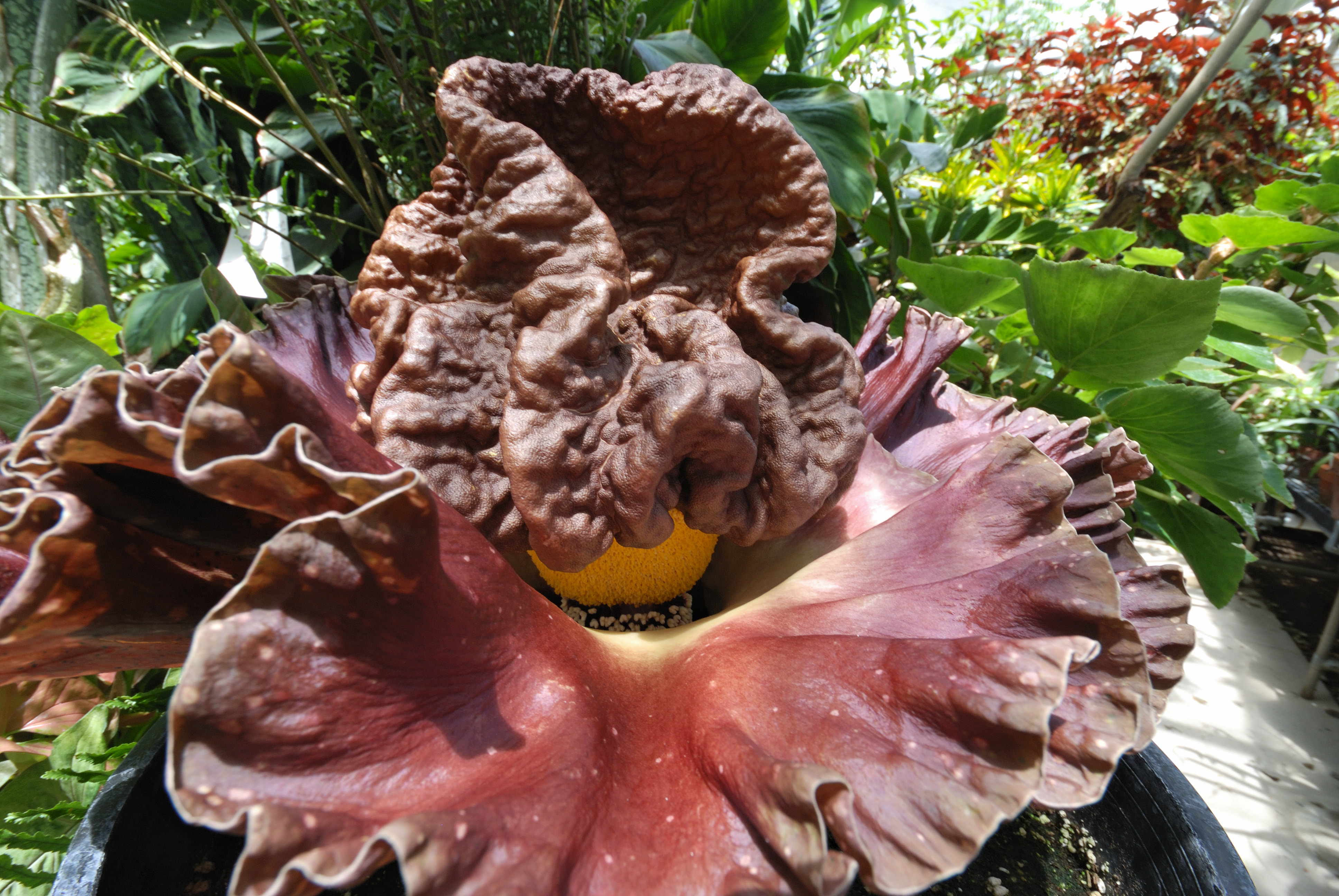
A blooming Amorphophallus paeoniifolius (corpse flower).
• Why did we stop eating foods that came in aerosol cans? “Push-button cuisine is one of the great, unrealized dreams of postwar food technology. In the 1950s and 1960s, food manufacturers, along with their allies in the container and chemical industries, imagined a world of effortless convenience, where, in the words of one 1964 newspaper article, ‘entire meals…can be oozed forth by a gentle push on a few cans.’ The aerosol container seemed to be the apotheosis of ease and modernity, ‘a sort of Aladdin’s genie, ready at the touch of a fingertip to perform all sorts of bothersome kitchen chores.’ Dozens of different aerosolized food and beverage products were introduced, from spray-on-coffee-concentrate to spray-on-pancake-batter. But despite the hype and high hopes of manufacturers, consumers didn’t buy it. By the late 1970s, only a few of the spray-foods survived.” (Lucky Peach)
• When James Joyce met Italo Svevo. (Literary Review)
• Reexamining the relationship between American readers and the slave narrative: “American audiences haven’t been this interested in slavery stories since the nineteenth century, when narratives by escaped or freed slaves became best-sellers. The Interesting Narrative of the Life of Olaudah Equiano, an autobiography of a former slave living in Britain that was first published in 1789, had at least ten editions by 1837. Narrative of the Life of Frederick Douglass, an American Slave, now required reading, was massively popular upon its release in 1845, selling 5,000 copies in four months. Solomon Northup sold 27,000 copies of his book within two years. Slave narratives ‘provided antislavery propaganda,’ Vernon Loggins observed in The Negro Author in 1931. ‘But that they sold rapidly is a surer reason for their great abundance.’” (The New Republic)
• Reading a book and walking at the same time: dangerous, but not impossible. (The Awl)
• In Queens, a woman has turned one of New York City’s oldest houses into a DIY museum: “When Marion first took up residence, she found that some of the Riker family’s stories were tucked away in the padlocked attic. Michael had never explored the space, but she discovered that it was filled with old ledgers, correspondence, receipts, and cancelled checks tied with pink satin ribbons. She sat up there for days, reading through the family’s letters. ‘I saw people grow old, and I saw people die,’ she says. ‘And I thought: Here’s Lavinia, and here’s Miriam, and here’s Abraham. They were all there.’” (Jezebel’s Pictorial)
• The corpse flower: it smells bad! (Paris Review Daily)